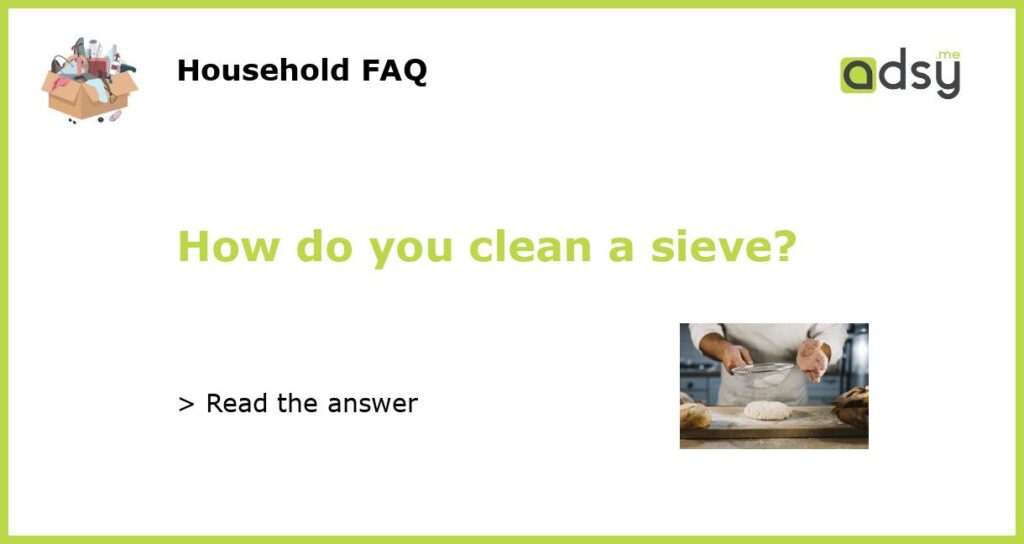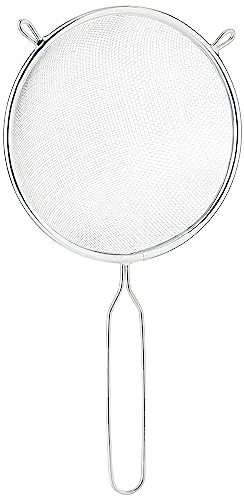Why Cleaning Your Sieve is Important
A sieve is a common kitchen tool used for straining liquids and separating solids from liquids. Over time, food particles and residue can build up in the mesh of the sieve, making it less effective and potentially causing contamination. Cleaning your sieve regularly is important for maintaining food safety and ensuring optimal performance.
Step-by-Step Guide to Cleaning Your Sieve
Cleaning a sieve is a relatively simple process that can be done using basic kitchen tools and ingredients. Follow these steps to effectively clean your sieve:
Materials and Tools Needed
Before you start cleaning your sieve, gather the following materials and tools:
- Dish soap or detergent
- Warm water
- Cleaning brush or sponge
- Old toothbrush (optional)
Step 1: Rinse the Sieve
Start by rinsing the sieve under warm water to remove any loose debris or food particles. This will make the cleaning process easier and more effective.
Step 2: Prepare a Cleaning Solution
In a sink or large bowl, mix a small amount of dish soap or detergent with warm water. This will create a cleaning solution that will help break down grease and remove stubborn stains.
Step 3: Soak the Sieve
Place the sieve in the cleaning solution and let it soak for a few minutes. This will help loosen any remaining food particles and make them easier to remove.
Step 4: Scrub the Mesh
Using a cleaning brush or sponge, gently scrub the mesh of the sieve, paying extra attention to areas with visible residue or stains. You can also use an old toothbrush to reach smaller crevices and corners.
Step 5: Rinse and Dry
After scrubbing the mesh, rinse the sieve thoroughly under running water to remove any soap residue. Shake off any excess water and pat dry with a clean towel or paper towel. Allow the sieve to air dry completely before storing or using it again.
Tips and Precautions
Here are some additional tips and precautions to keep in mind when cleaning your sieve:
- Do not use abrasive cleaners or scrubbing pads, as they can damage the mesh of the sieve.
- If the mesh of the sieve is severely clogged or stained, you can try soaking it in a mixture of warm water and white vinegar for a few hours before scrubbing.
- If you are cleaning a fine mesh sieve, use a soft brush or sponge to avoid damaging the delicate mesh.
- Regularly check your sieve for any signs of damage or wear. If the mesh is torn or frayed, it may be time to replace the sieve.
Cleaning your sieve regularly is essential for maintaining food safety and ensuring optimal performance. By following these simple steps, you can effectively clean your sieve and keep it in good condition for years to come.






